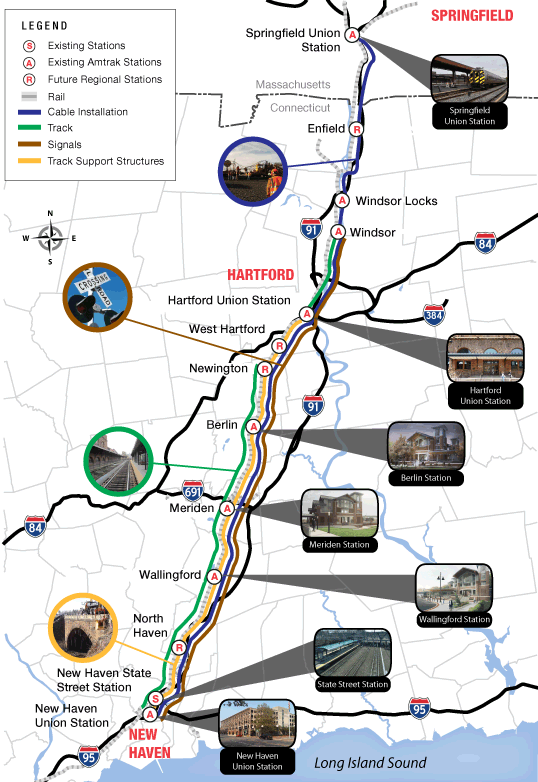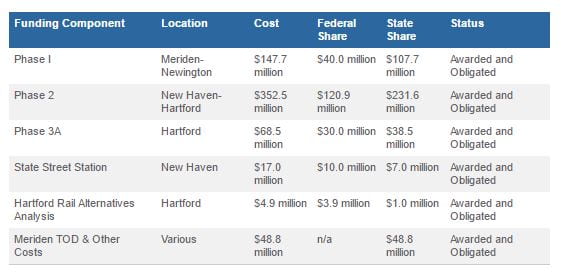Partnership Aims to Bring High Speed Rail Corridor to New England
Over the course of the next several weeks, MuniNet Guide will take a closer look at some of the more significant and interesting high speed rail projects and plans going on throughout the United States. The aim is to take a critical look at the potential benefits sought by each project, the stages of development, and the challenges and drawbacks involved.
Part I of this series on high speed rail projects looks at the New Haven-Hartford-Springfield Rail Program (NHHS). NHHS seeks to construct a high speed line, the CTrail Hartford Line (Hartford Line), between Springfield, Massachusetts and New Haven Connecticut. The primary stakeholders are the State of Connecticut, Amtrak, and the Federal Railroad Administration. The State of Massachusetts and the State of Vermont are also contributing to the project.
The project could benefit the entire region, as the current rail line is a gateway to other lines traveling into Vermont and even as far as Montreal, Canada. Additionally, Expanded services by Amtrak and Connecticut Department of Transportation are planned to peak at 25 trains per day each way. Below is a map of the route being expanded and improved, courtesy of the NHHS:
Project Stats:
The project involves several infrastructure enhancements:
- 23 miles of additional double track on existing single track sections
- 2 miles of new passing sidings, for the meeting and passing of trains
- 5 new interlockings, so trains can change tracks
- Signaling and control systems, including Positive Train Control by Amtrak.
- Repair, rehabilitation and replacement of bridges and culverts
The current schedule goal is as follows:
- Environmental Assessment: January 2012 – Completed
- Preliminary Engineering: June 2012 – Completed
- Final Design: October 2014 – Completed
- Finish construction/launch service: January 2018
Further, the project expects to support 4,500 construction jobs, part of 8,000 jobs directly and indirectly involved. Some of the environmental benefits, based on assumed ridership usage, include 3.5 million fewer gallons of fuel used by commuters each year, and 25,000 metric tons less carbon released annually.
The total budget for the project is $639 million. NHHS provides a breakdown:
This project already has a completed environmental impact, approved plans, as well as funding sources. However, NHHS should not be confused with the much more ambitious and controversial planned updates to the Northeast Corridor. The Northeast Corridor project impacts mostly Connecticut, and also has potential costs amounting to hundreds of billions of dollars. We will look at that project, and other projects as well as alternatives to high speed rail, in future articles for this series.
by Jeffrey L Garceau


